On page one the paper’s editor, Charles Kihega (Iowa) wrote a letter about his successful journey home. Metopah (Osage), Taylor Ealy (Pueblo), and Frank Everett (Wichita) also wrote letters from their outing locations back to the school. On page two eight boys and twelve girls took a trip to explore Luray Cave. Also on the same page Van Horn (…
Osage
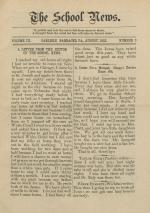
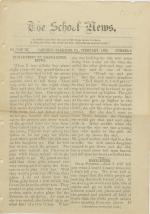
The first page had a story told to Joshua Given (Kiowa) by his grandparents about a young girl who never touched the ground and one day chased a star into the sky. It also included a letter from Louis Big Horse (Osage) to his father in which he discussed planting fruit. Page two had an article titled “What Indians Must Have” by paper editor…
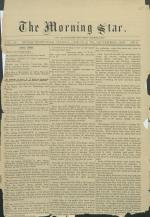
Page one had “Local Items” which consisted of small daily events such as the weather and games the students invented. Page two started with “A Plea for Greater Liberality in the Cause of Indian Education”, followed by “The People Responsible”, and “A Devoted Indian Missionary Dead”, which talked of the death of Dr. Stephen R. Riggs. Page three…
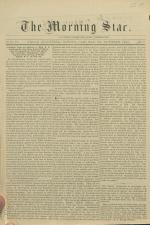
Page One had extracts from an address of Hon. B.G. Northrop Ex. Sec. State Board of Education of Connecticut. Page two had “Items of Interest From the Late Sioux Commission”, as well as a short piece on “What our Pupils in the Country Say.” Page three had short vignettes on various Local Items including returned students, weather and crops.…
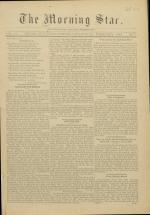
Page one opened with Proverb 11:23. Also on he page was “Educating The Indians”, and a Pueblo legend as told by a Pueblo student. Page two had story about a foolish farmer, as well as an important letter from an Indian Agent, and a piece on a conference at Lake Mohonk. Page three had the School Items which included Sunday services and the…
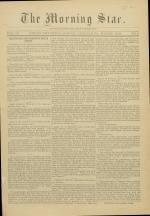
Page one opened with “The Thoughts and Opinions of Indian Agents” which took up the entire page an continued onto page four. Page two had an article on caring for Indians and small pieces on enforced education, and the need for books and paper for school. Page three had the school items, which mentioned things such as the death of Lizzie McNac…
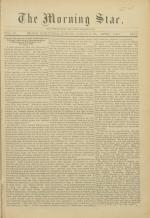
Page one had the speech Cap. Pratt gave at the National Convention of Superintendents of Education at Washington, D.C. He talked about how the solution to the “Indian Problem” was to give them all an education. Page two had an article on the relationship between the government and the Indian schools, as well as small pieces questioning who’s…
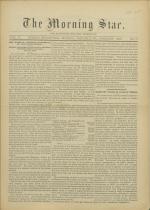
Page one opened with an extract from Hon. Byron M. Cutcheon speech, “Our Indian Policy,” originally given to the House of Representatives. Following that was “Secretary Teller in Favor of Schools.” Page two had a list of Bills and Resolutions relating to Indians that went before congress recently. Also on Page two was a letter from a Carlisle…

The first page opened with a poem titled “Take Care,” by Alice Cary, followed by a report of “An Old Osage,” that blamed the poor conditions on the reservations on the lack of schooling. The article, written by “Aunt Martha,” concluded on the fourth page. Page two opened with “God Helps Those Who Help Themselves,” reporting the efforts of the…
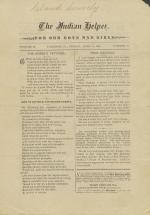
This issue opened with a poem titled “THE HORSE’S PETITION,” followed by an alphabet poem titled “HOW TO GET RICH AND BECOME FAMOUS.” “TRUE COURAGE” offered a treatise on the rewards of kindness. Page two opened with news of a measles outbreak at the Ponca Agency, the influence of Carlisle students at the Crow Reservation, a report on the…
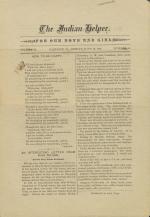
This issue opened with a poem titled “HOW TO BE HAPPY,” reprinted from Selected. The next item which continued on page four was a travelogue of school nurse, Miss Wilson’s, trip to Scotland, an ocean voyage that lasted eleven days, titled “AN INTERESTING LETTER FROM MISS WILSON: All the Way from Scotland.” Page two opened with a column…
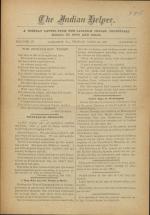
The first page opened with a poem "The Printer-Boy Tramp” by Will Carleton, followed by “Encouraging Prospects” about Luther Kuhns at the Pawnee Agency. Next came “A Man Who was not Afraid to Work” on how General Washington set an example for his corporal. Also on the page was an article titled “Easter Eggs in Washington.” Page two contained a…
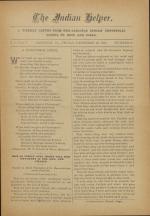
The first page opened with a poem titled "A Christmas Carol by Eleanor W.F. Bates in Home Magazine. Next came a new installment of the series titled “How An Indian Girl Might Tell Her Own Story if She Had the Chance: Founded on Actual Observations of the Man-on-the-band-stand’s Chief Clerk” (continued from the previous week). In this…
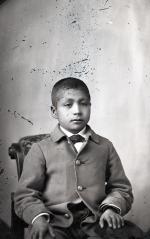
Studio portrait of Elmer wearing school uniform.
![Six male Osage students [version 1], c.1881 Six male Osage students [version 1], c.1881](/sites/default/files/styles/views_taxonomy/public/image-photo/NAA_73227.jpg?itok=jLCxsyY6)
Studio portrait of six male students, all wearing school uniforms. The caption identifies them as being from the Osage tribe.
Cumberland County Historical Society Staff have identified Fred Lookout as the student in the front row, far right, based on comparison with other photos.
![Six male Osage students [version 2], c.1881 Six male Osage students [version 2], c.1881](/sites/default/files/styles/views_taxonomy/public/image-photo/CCHS_PA-CH1_038a.jpg?itok=MjyhT6e4)
Studio portrait of six male students, all wearing school uniforms. The caption identifies them as being from the Osage tribe.
Cumberland County Historical Society Staff have identified Fred Lookout as the student in the front row, far right, based on comparison with other photos.
The Cumberland County Historical…
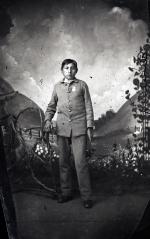
Studio portrait of Elmer wearing school uniform.
![Emily Ross and Ella Ross [version 1], c.1882 Emily Ross and Ella Ross [version 1], c.1882](/sites/default/files/styles/views_taxonomy/public/image-photo/NAA_74090.jpg?itok=Y7nLJ12l)
Studio portrait of Emily Ross and Ella Ross, both wearing white pinafores over dark dresses.
![Emily Ross and Ella Ross [version 2], c.1882 Emily Ross and Ella Ross [version 2], c.1882](/sites/default/files/styles/views_taxonomy/public/image-photo/CCHS_PA-CH1_003a.jpg?itok=bEYWoTFs)
Studio portrait of Emily Ross and Ella Ross both wearing white pinafores over dark dresses.
![Five young female Osage students [version 1], c.1882 Five young female Osage students [version 1], c.1882](/sites/default/files/styles/views_taxonomy/public/image-photo/NAA_73435.jpg?itok=2uksgbRa)
Studio portrait of five young female students, all wearing school uniforms with white pinafores. They are Alice Long Pole, Julia Pryor, Metopa, Josephine Pryor, and Myrtie Tallchief.
![Five young female Osage students [version 2], c.1882 Five young female Osage students [version 2], c.1882](/sites/default/files/styles/views_taxonomy/public/image-photo/CCHS_PA-CH1_040a.jpg?itok=85sdnCxQ)
Studio portrait of five young female students, all wearing school uniforms with white pinafores. They are Alice Long Pole, Julia Pryor, Metopa, Josephine Pryor, and Myrtie Tallchief.
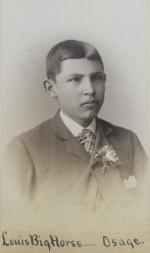
Studio portrait of Louis Bighorse.
![Peliza, Paul Big Horse, and Edward Chouteau [version 1], c.1882 Peliza, Paul Big Horse, and Edward Chouteau [version 1], c.1882](/sites/default/files/styles/views_taxonomy/public/image-photo/CIS-MC-005-f38.jpg?itok=ZrFFJf7B)
Studio portrait of Peliza, Paul Big Horse, and Edward Chouteau, all wearing school uniforms.
![Peliza, Paul Big Horse, and Edward Chouteau [version 2], c.1882 Peliza, Paul Big Horse, and Edward Chouteau [version 2], c.1882](/sites/default/files/styles/views_taxonomy/public/image-photo/CCHS_PA-CH1_037a.jpg?itok=K_vA4GHB)
Studio portrait of Peliza, Paul Big Horse, and Edward Chouteau, all wearing school uniforms.
The Cumberland County Historical Society has several copies of this image: PA-CH1-037a, CS-CH-056, and CS-CH-075.
![Embry Gibson [version 1], c.1883 Embry Gibson [version 1], c.1883](/sites/default/files/styles/views_taxonomy/public/image-photo/NAA_74384.jpg?itok=S9dZb6dV)
Studio portrait of Embry Gibson.
